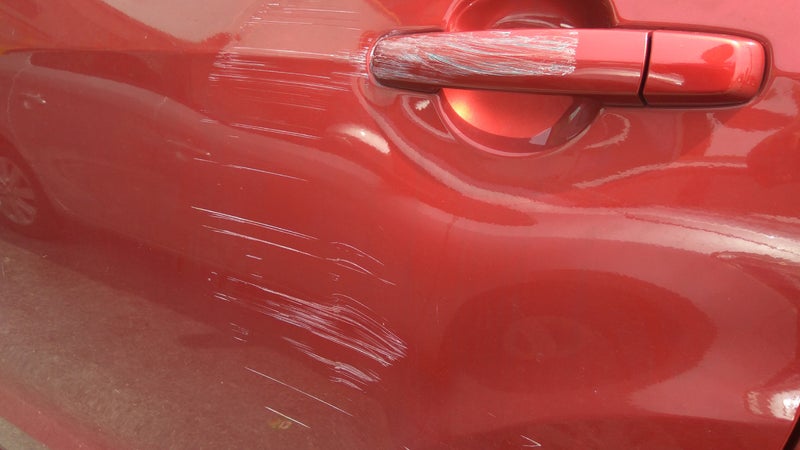Connecticut car insurance laws

The Bankrate promise
At Bankrate, we strive to help you make smarter financial decisions. To help readers understand how insurance affects their finances, we have licensed insurance professionals on staff who have spent a combined 47 years in the auto, home and life insurance industries. While we adhere to strict , this post may contain references to products from our partners. Here's an explanation of . Our content is backed by Coverage.com, LLC, a licensed entity (NPN: 19966249). For more information, please see our .
Drivers in Connecticut should be aware of the state’s auto insurance regulations and understand how the state laws relate to their responsibilities as a driver. Under Connecticut car insurance laws, every driver needs to carry liability insurance and uninsured/underinsured motorist coverage. While these requirements ensure a basic level of protection and legal compliance, they likely won’t fully cover the many financial risks associated with driving. Because of this, many Connecticut drivers consider boosting their coverage with add-ons to further personalize their policy to their unique needs and challenges while driving in the state.
Car insurance laws in Connecticut
Here is a breakdown of what Connecticut car insurance laws require of drivers:
- $25,000 bodily injury coverage per accident, per person
- $50,000 bodily injury coverage per accident, total (if more than one person is injured)
- $25,000 in property damage
- $25,000 per accident, per person, for uninsured or underinsured drivers
- $50,000 per accident, total, for uninsured or underinsured drivers
This means that if you have the minimum legal coverage and are in an accident that is your fault, your insurance will cover the medical costs or lost wages up to $25,000 if the other driver or a passenger is injured. If more than one person is injured, your insurance will cover a total of up to $50,000.
You’re also covered for up to $25,000 per person and $50,000 per accident if the other person is driving illegally without insurance or without enough insurance to cover your costs.
Liability insurance in Connecticut
While minimum coverage is all that Connecticut auto insurance laws require, these minimums may not be enough in all situations. Liability coverage is designed to cover the costs of others when you are at fault for an accident. Your liability coverage will not pay for damages to your vehicle or help with your medical bills. In some cases, liability coverage limits may not even be enough to pay for the damages and injuries you cause if you are at fault for an accident.
Connecticut car insurance requirements are mandatory and a good place to start. Still, many drivers may benefit from increasing their coverage limits or adding other coverage types like collision and comprehensive car insurance. Both coverage types are designed to cover damage to your vehicle, even if no one else is at fault. Understanding how much car insurance you need can be a tricky calculation and talking to an insurance expert can help.
Is Connecticut a no-fault state?
Connecticut’s car insurance laws regarding fault underwent a significant shift in 1994, transitioning from a no-fault system to its current tort, or at-fault, system. Under the no-fault system, drivers were required to carry personal injury protection (PIP), which pays for medical expenses, lost wages and other related costs, regardless of who was at fault in an accident. The switch to an at-fault system eliminated this requirement, marking a notable change in how car insurance claims and liabilities are handled in the state.
Since Connecticut is no longer a no-fault state, drivers are not legally mandated to have PIP insurance. Instead, the involved party deemed at fault is liable for the damages. An at-fault system allows for greater flexibility in terms of legal recourse. For instance, if you’re injured in an accident, you retain the right to sue the responsible party for damages, which can include medical costs, pain and suffering and lost earnings.
However, it’s important to consider that without PIP coverage, costs incurred from an accident such as medical expenses might need to be initially covered out of pocket or through your health insurance until a claim is settled or a court awards damages.
Penalties for driving without insurance in Connecticut
There are several penalties levied by the state government if you fail to have auto insurance in Connecticut. In fact, you may be fined $50 even if you have insurance, but do not carry proof of that insurance with you at all times when you are driving.
If you do not have car insurance, you will be fined anywhere from $100 to $1,000 and may have your license suspended. If you own a vehicle with a commercial registration, that fine increases to up to $5,000 and may include jail time. There is also a license reinstatement cost of $175, and there may be other fines depending on your situation.
Additional auto insurance coverage options in Connecticut
Liability, uninsured motorist coverage and underinsured motorist coverage are not the only types of insurance available to Connecticut drivers. Most insurance companies offer additional coverage options that are worth considering, including the following:
- Collision: Liability pays for damage to the other driver’s car and property, but for your car to be covered you will need collision insurance. As the name suggests, collision covers damage to your car in the event of an accident, even if you are at fault.
- Comprehensive: Usually sold along with collision, comprehensive insurance covers many mishaps that might happen to your car other than an accident. Incidents like hail damage, fallen limbs and vandalism can be covered by comprehensive insurance.
- Medical payments: This covers medical costs for you or your passengers in the event of an accident where the other driver’s insurance will not cover you. It also includes lost wages and funeral expenses and may even cover you if you are a pedestrian who is hit by a car. It might overlap with your health insurance, so check that policy to see what is covered before you purchase medical payments coverage.
- Gap insurance: If an accident totals your new car, the insurance payout might not be enough to cover the full cost of your outstanding loan due to the car’s depreciation. This coverage bridges that gap, ensuring you don’t have to pay out of pocket.
- New car replacement: Similar to gap coverage, this endorsement on your policy will cover the cost of purchasing a new car of the same type if your vehicle is totaled.
- Ride sharing coverage: If you drive for Uber, Lyft or another ride sharing company, you may need this coverage, as regular car insurance does not cover your vehicle when used for business purposes.
Frequently asked questions
-
-
Determining the best car insurance company in Connecticut depends on your specific needs and circumstances. For high-risk drivers with prior incidents, finding companies that offer competitive rates and tailored policies is key so you aren’t overly penalized. If you drive infrequently, consider insurers with telematics programs, which can lower premiums based on your driving habits. You may also seek to bundle insurance policies with a company you have an existing relationship with. Ultimately, the best insurance company is one that aligns with your driving profile, coverage needs and financial situation. You may want to determine your insurance needs and then seek out quotes from multiple insurance providers before making your decision.
-
It is a good idea to shop around and collect several quotes when looking for car insurance to see which insurer offers you the best prices for the most comprehensive coverage. Check out our findings for the cheapest car insurance in Connecticut to see which companies are offering the lowest rates currently. It can be helpful when shopping around to also compare your quotes to the average cost of car insurance in your area.
-
While you will be legally in the clear once you meet the Connecticut minimum car insurance requirements, you may still be financially vulnerable. Minimum coverage limits may not be enough to cover the costs of totaling another driver’s car or paying their hospital bills. Also, if you are at fault for an accident, minimum coverage could leave you paying out of pocket for your medical and repair costs. Many drivers elect to increase their coverage limits and add other coverage types like comprehensive and collision.
-
Some of the best ways to save on car insurance may be shopping around for better rates and looking for car insurance discounts. Many insurers offer discounts that can individually or cumulatively have a significant impact on rates. Each insurer has its own discounts and eligibility requirements, but some, like paperless billing, are both common and easy to qualify for. To save on car insurance rates, find the insurer who offers you the best deal on the coverage you want and then see which of their discounts could apply to your account.
-



